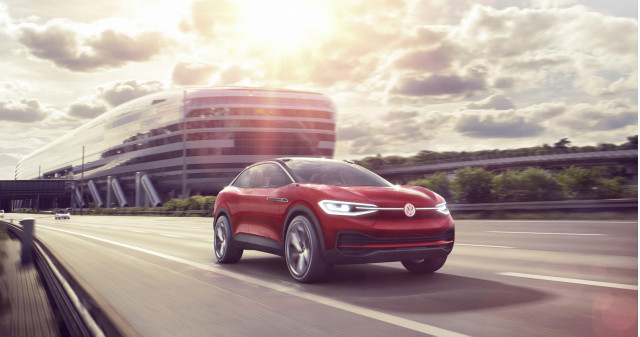
Volkswagen ID Crozz concept
First it was Tesla, now Volkswagen.
Ever since British designer and engineer Alec Issigonis developed the original Mini Cooper for 1959, front-wheel-drive vehicles have been consolidating their hegemony on the car market.
Volkswagen itself was one of the main champions of front-wheel drive when it switched from the rear-wheel-drive Beetle to the front-wheel-drive Golf as its mainstream car in the 1970s.
DON'T MISS: Volkswagen details the foundation for 10 million electric vehicles
As it begins its transition to electric cars, Volkswagen's head of e-mobility in North America, Matthew Renna, said at a round-table discussion with journalists at the LA auto show last month that electric cars will mark the end of FWD, according to a report in Motor Trend.
Not that a front-wheel-drive electric car is inherently bad. Most electric cars today are FWD, including the VW e-Golf and the Nissan Leaf.
The advantages of FWD for gas cars included better space efficiency, less weight, lower cost, and better foul-weather traction with the weight of the engine over the drive wheels.
READ THIS: VW’s new U.S. CEO: The tipping point on EVs is already here
The relatively small motor in an electric car doesn't bring such a space or cost penalty and is easy to mount in the front or back or both for all-wheel drive. With AWD, electric motors give automakers more direct control of power or brake torque at individual wheels, which can be even more effective for snow or ice traction than focusing weight on one end of the car or the other.
With no compelling reason to put the motor in the front of the car and drive the front wheels, Renna said, "With the improved dynamics of rear-wheel drive, that lends itself to being a bit better for a rear-drive platform. If it's the same efficiency and the same cost, dynamics would prevail."
CHECK OUT: Track Mode released to make more of Tesla Model 3 Performance
Furthermore, in an electric car with relatively even weight distribution (because it doesn't have a heavy engine hanging off one end or the other), the rear is where you want power to go, because that's where the body weight transfers when the driver accelerates.
The other reality is that in an electric car, batteries are the most expensive component, not motors. Adding a second motor up front to deliver all-wheel drive is likely to make all-wheel-drive cars more affordable than ever before.